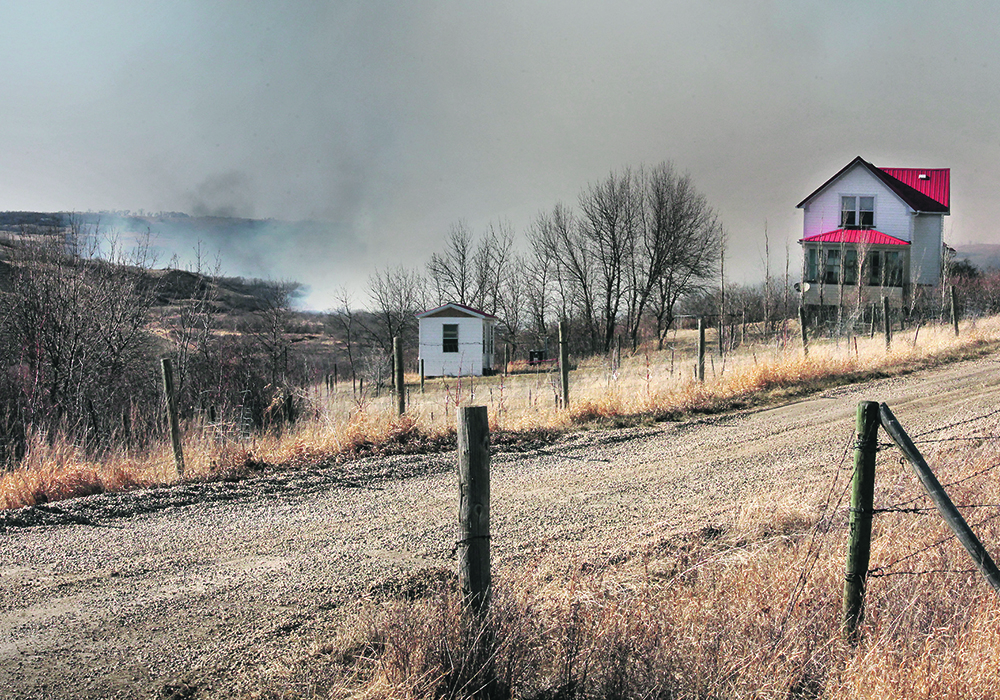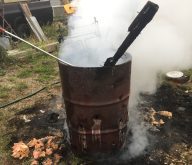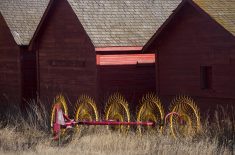When most of us think back to the summer of 2023, we will remember it as three things: hot, dry and smoky.
This year, Canada has experienced one of the worst wildfire seasons on record, with more than 1,000 active fires burning in August.
For those of us lucky enough to not be directly affected by these fires, the second-hand smoke and tales of family and friends forced to evacuate were enough to make it seem very real — and close to home.
Read Also

Downturn in grain farm economics threatens to be long term
We might look back at this fall as the turning point in grain farm economics — the point where making money became really difficult.
This feeling should remind Alberta farmers and ranchers that farm fires can happen in seconds, especially when conditions are hot and dry, and cause a lifetime of damage.
Although the incidence of fires on Canadian farms has declined in recent decades, the severity of these fires has gone up alongside the size of farms. Farm assets, including equipment, crops and animals, are all at high risk and losses can reach into the millions of dollars when a fire burns out of control. It is even more serious is if lives are lost because of a lack of planning or prevention.
Farmers can take steps to prevent or minimize risks and keep the people on the farm safe.
The first step is an inspection plan to regularly check areas where fire often occurs because of mechanical or electrical failures; misuse of ignition sources or igniting equipment; and design, construction or maintenance deficiencies.
Reducing the risk of combustion can include keeping equipment clean by regularly blowing off dust and removing any residue or combustibles, especially on hot and dry days. This also means keeping engines, motors and machinery well maintained to prevent malfunction and overheating.
Another important prevention measure is ensuring buildings and structures are up to safety codes. This means all farm buildings should have two easily accessible exits that are clearly marked and there should be maps to indicate exit locations.
It is also important to have a system to alert workers to a fire, such as a fire alarm. This should be tested regularly to ensure it is working. Additionally, are there fire extinguishers available and have they been checked or re-certified as needed or are they collecting dust?
Finally, emergency generators are important to have on farms, but they should be kept responsibly. This means you should regularly ensure they’re in good working order and they should only ever be used in appropriate, well-ventilated areas.
Prevention is key, but it’s also crucial to ensure everyone on your farm or ranch knows what to do in the case of a fire emergency. This means having an emergency action plan in place.
This should be a written plan that everyone who works on your farm is familiar with and has been trained on. The plan should clearly outline priorities, roles and tasks in the case of a fire emergency.
The wildfire smoke has brought attention to the importance of air quality. Make sure if it is a smoky day that you are watching the air quality index to determine if the air will affect your workers, especially ones who have conditions like asthma.
As the incidence and severity of wildfires across Canada climb, so do the risks to your farm. The smell of fire in the air should remind you that dangers are close to home, and the stakes are high. Visit agsafeab.ca for more resources on farm fire safety or reach out to us for more information.
Jody Wacowich is the executive director of AgSafe Alberta.

















